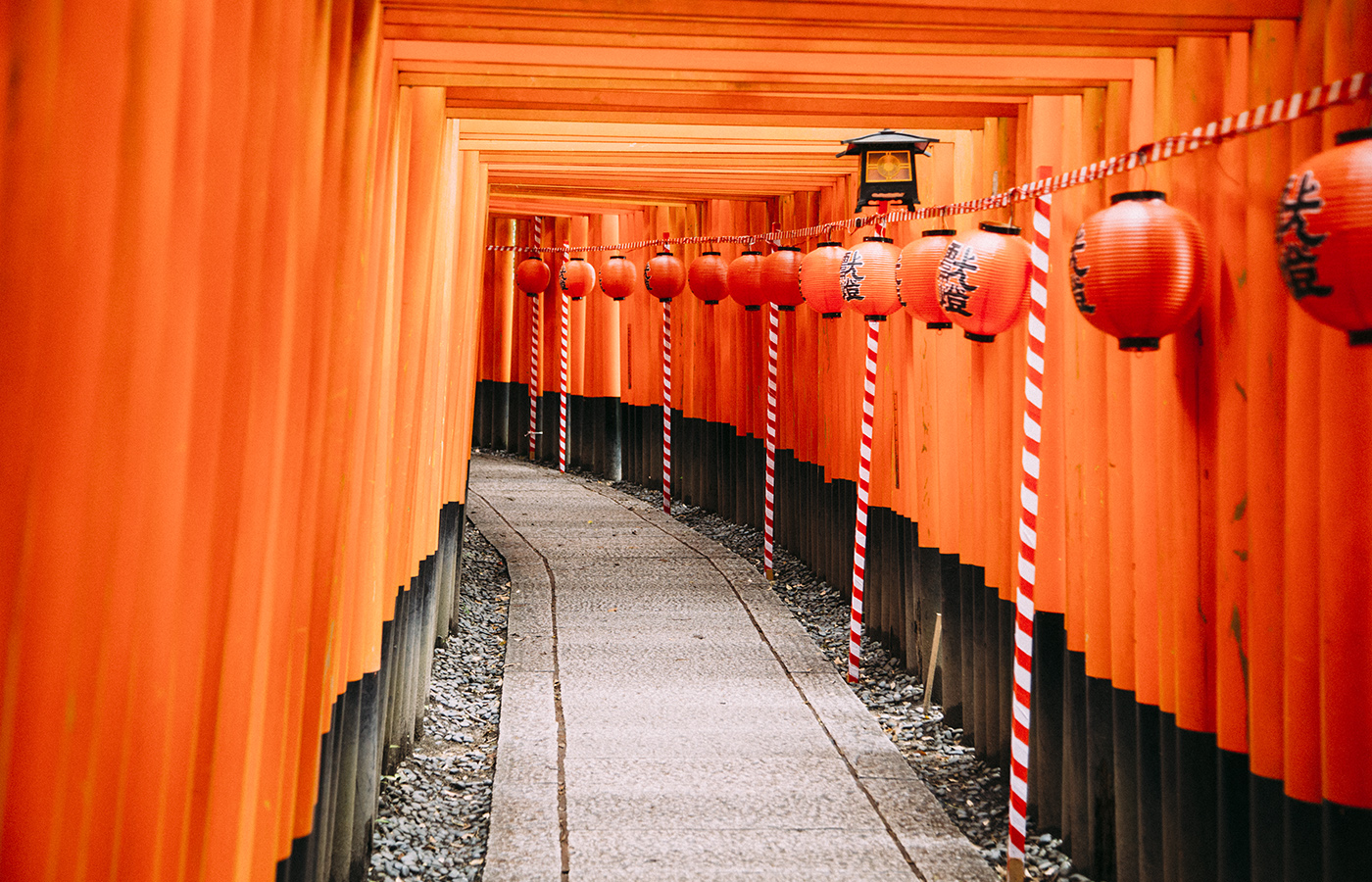A Sea Of Orange: Exploring The Fushimi Inari Torii Gates
Behold the most orange your eyes will see all week! Kyoto’s Fushimi Inari Torii Gates opened its arms to us in the most colorful way and my heart’s been palpitating ever since. Something about the thousands upon thousands of stacked vermillion gates lining the long trek up the mountain peak makes my head kind of woozy even still. Experiencing the trek upwards to the shrine was a true Kyoto moment. A moment where old meets new and tradition meets brilliance.
Fushimi Inari Torii gates date back to 711 A.D. (let’s just take a second and acknowledge how ancient that date truly is), where they created a grande entrance to the sacred mountaintop shrine of Inari, the Shinto god of rice. Although torii gates can be found almost everywhere in Asia, none bear quite the boldness of these thousands of orange beauties. Each one was donated by a company who wished to give thanks for their prosperity and good fortune. Walking through each tunnel of toriis was a thrill. A big, bold and really orange thrill.
For those who know me, foxes are one of my favorite animals. So, of course, after learning more information about the history of the Shinto religion and its many symbols and folklore, I was beside myself to learn that my favorite wild animal was considered to be Inari’s secret messengers. The Japanese believed that foxes were capable of capturing the human spirit with a simple gaze, and so many statues and offerings of them are found throughout the area. Like I said, I was loving it!
The trek to the shrine is an upwards hike that takes approximately three to four hours in total from beginning to end. But fear not non-athletic folks! Each tunnel of toriis is just as gorgeous as the next, so turning around isn’t something that is frowned upon. While enjoying the varying sizes and shades of orange (Is it weird to make a 50 shades of orange joke here? Oh well, I’m doing it anyway!) there are lots of little restaurants and pit stops for travelers to take a break.
The cutest little shops and souvenir shops line the main gate before the trail to top, so be sure to wander through the side streets too. You can even buy a mini orange torii for your backyard if you can squeeze it into your luggage!
While editing these pictures I recalled how striking the rows of toriis were in contrast to the deep green forests that surround the sacred area. The moss and the towering pine trees embank both sides of the tunnels, amplifying its absolute serenity and even added a tinge of eeriness to the whole place. When we found ourselves truly alone in a quiet section of the trek (which is quite an oddity in the middle of the touristy summer season), there was definitely an odd creepiness to the peace and quiet that surrounded us.
The Japanese people, in their dignified and soft spoken nature passed us in complete solitude, present in their journey towards the shrine. One thing I find myself wanting to be able to relive over and over again is just experiencing the absolute civility of the Japanese culture. Their politeness, their quiet nature, their consciousness of themselves and their surroundings. Being around such a peaceful and civilized people was a great break from the rough and tumble, independent, go-get-em nature of the United States. I’m still trying to nail down what exactly stayed with me the most about our time in Japan, but just experiencing this shift in culture is definitely up there.
Kyoto’s Fushimi Inari Torii Gates are a not-to-be-missed sight while visiting the city. That is if you can pull yourself away from all the delicious sushi and ramen! When is the last time you found yourself in a striking environment?










